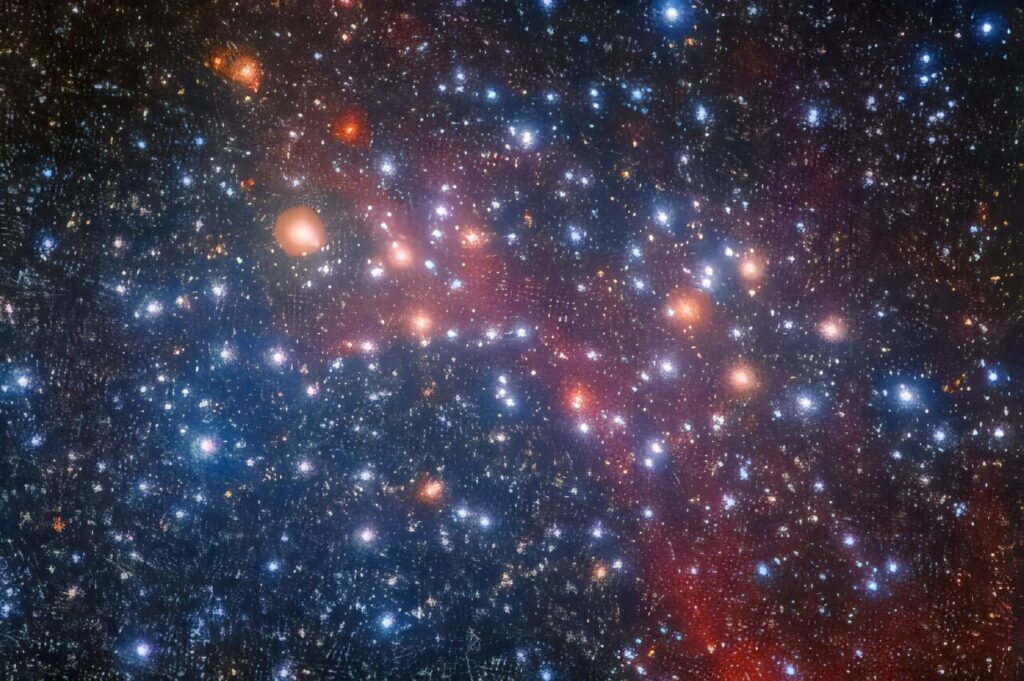
The MPG/ESO 2.2-meter telescope at ESO’s La Silla Observatory in Chile has captured a stunning image of the star cluster NGC 3532, showcasing stars that range from hot bluish hues to rich orange-red giants. This celestial display underscores the inherent challenge in astronomy: determining the ages of stars. In a groundbreaking development, astronomers at the University of Toronto have harnessed the power of artificial intelligence to tackle this issue.
Their innovative model, ChronoFlow, employs machine learning to analyze a dataset of rotating stars in clusters, offering a new method to estimate stellar ages with unprecedented accuracy. This approach, detailed in a recent publication in The Astrophysical Journal, marks a significant leap forward from traditional analytical models.
Revolutionizing Stellar Age Estimation
Phil Van-Lane, a Ph.D. candidate leading the research, describes the initial success of the model:
“The first ‘Wow’ moment was in the proof-of-concept phase when we realized that this technique actually showed a lot of promise,”
he explains. Van-Lane collaborated with assistant professors Josh Speagle and Gwen Eadie, both experts in astrostatistics, to refine this cutting-edge model.
ChronoFlow integrates two existing methodologies to improve age estimation of stars. Traditionally, astronomers have relied on observing star clusters, where the evolutionary stages of higher mass stars provide clues about the cluster’s age. Additionally, it is known that as stars age, their rotation slows due to interactions between their magnetic fields and stellar winds, a phenomenon difficult to quantify mathematically.
Harnessing Data and Machine Learning
To develop ChronoFlow, the researchers compiled the largest-ever catalogue of rotating stars in clusters, encompassing approximately 8,000 stars across over 30 clusters of varying ages. Data from stellar surveys such as Kepler, K2, TESS, and GAIA were instrumental in this effort. The AI model was trained to predict changes in stellar rotation speeds as stars age.
Josh Speagle likens the challenge to estimating a person’s age from photographs:
“In astronomy, we don’t know the ages of every star. We know that groups of stars have the same age, so this would be like having a bunch of photos of people at five years old, 15 years old, 30 years old, and 50 years old, then having someone hand you a new photo and ask you to guess how old that person is. It’s a tricky problem.”
Implications for Astronomy
ChronoFlow’s ability to estimate stellar ages with remarkable precision opens new avenues in astronomy. Understanding stellar ages is crucial not only for studying star mechanics but also for modeling the formation and evolution of exoplanets. Additionally, it provides insights into the historical evolution of our Milky Way and other galaxies.
The success of ChronoFlow highlights the potential of machine learning models to address complex astrophysical challenges. The researchers plan to make the model publicly available, complete with documentation and tutorials to assist others in inferring stellar ages from observations. The code will be accessible on GitHub, inviting further exploration and application.
As the field of astronomy continues to evolve, the integration of AI technologies like ChronoFlow represents a significant step forward, promising to deepen our understanding of the universe and its myriad mysteries.
For more information, refer to the original research by Phil R. Van-Lane et al., titled ChronoFlow: A Data-driven Model for Gyrochronology, published in The Astrophysical Journal (2025). DOI: 10.3847/1538-4357/adcd73.







